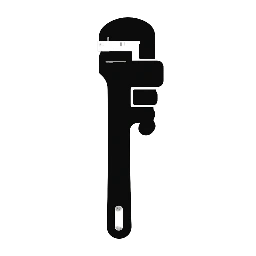Reverse Osmosis (RO) systems are the backbone of countless commercial operations, from restaurants and laboratories to manufacturing plants and healthcare facilities. They provide consistently purified water, essential for product quality, operational efficiency, and even public health. However, the performance of an RO system is only as good as its filters. Neglecting scheduled filter replacements can lead to a cascade of problems, including decreased water quality, system damage, and costly downtime.
This in-depth guide will explore everything you need to know about scheduled commercial RO filter replacement intervals, helping you optimize your system for longevity, efficiency, and peak performance.
Why Scheduled RO Filter Replacement is Non-Negotiable
Before diving into the “when” and “how,” it’s crucial to understand the “why.” Here’s why adhering to a strict filter replacement schedule is paramount for your commercial RO system:
- Maintains Water Quality: The primary function of an RO system is to remove impurities. Over time, filters become saturated with these contaminants, losing their effectiveness. Timely replacement ensures your water remains consistently pure, meeting the specific quality standards required for your application.
- Protects the RO Membrane: The RO membrane is the heart of the system and the most expensive component to replace. Sediment, chlorine, and other chemicals can irreversibly damage the membrane if not adequately filtered by the pre-filters. Regular pre-filter replacement extends the lifespan of your RO membrane significantly.
- Ensures System Efficiency: Clogged filters force your RO system to work harder, leading to increased energy consumption and higher operating costs. Furthermore, compromised filtration can lead to “fouling” of the RO membrane, reducing its permeate flow and increasing the concentrate flow, thus wasting water.
- Prevents Costly Downtime: A sudden filter failure or membrane damage due to neglected maintenance can bring your operations to a halt. Scheduled replacements are proactive measures that prevent unexpected breakdowns and minimize expensive downtime.
- Reduces Repair and Replacement Costs: Investing in regular, affordable filter replacements is far more cost-effective than facing major repairs or premature replacement of expensive components like the RO membrane or high-pressure pump.
- Meets Regulatory Compliance: In many industries, water quality is subject to stringent regulations. Adhering to filter replacement schedules helps ensure your system consistently produces water that meets these compliance standards.
Understanding the Different Types of RO Filters and Their Roles
A typical commercial RO system employs a multi-stage filtration process, with each filter serving a specific purpose. Understanding these roles is key to comprehending replacement intervals:
- Sediment Filters: These are usually the first line of defense, removing larger suspended solids like dirt, rust, sand, and silt. They protect subsequent filters from premature clogging.
- Carbon Filters (GAC & Carbon Block): These filters remove chlorine, chloramines, volatile organic compounds (VOCs), pesticides, herbicides, and other chemicals that can damage the RO membrane and impart undesirable tastes and odors to the water. Granular Activated Carbon (GAC) filters are effective, while Carbon Block filters offer finer filtration and prevent carbon fines from passing through.
- RO Membrane: This semi-permeable membrane is the core of the system, responsible for removing dissolved solids, heavy metals, bacteria, viruses, and other microscopic impurities. It’s crucial for achieving high purity water.
- Post-Carbon Filters (Polishing Filters): Often a small carbon filter, this stage provides final “polishing” of the water after it leaves the RO storage tank, removing any lingering tastes or odors that may have developed.
- Specialty Filters (Optional): Depending on the raw water quality and specific application, additional filters may be incorporated, such as:
- Scale Inhibitors: Prevent mineral scale buildup on the RO membrane.
- UV Sterilizers: Kill bacteria and viruses.
- Deionization (DI) Resins: Further reduce total dissolved solids (TDS) for ultra-pure water applications.
Factors Influencing Commercial RO Filter Replacement Intervals
While manufacturers provide general guidelines, several factors can significantly impact the actual lifespan of your commercial RO filters:
- Raw Water Quality (Feed Water Analysis): This is the most critical factor.
- High Sediment Load: Leads to more frequent sediment filter changes.
- High Chlorine/Chloramine Levels: Requires more frequent carbon filter replacements.
- High Hardness/TDS: Can reduce the lifespan of the RO membrane and necessitate scale inhibitors or more frequent membrane cleaning.
- Water Usage Volume: Higher water consumption means more water is processed through the filters, leading to faster exhaustion. A system running 24/7 will require more frequent replacements than one used intermittently.
- System Design and Size: Larger systems with higher flow rates and more robust pre-filtration stages may have slightly extended filter lifespans compared to smaller, less complex units.
- Type and Quality of Filters: Premium quality filters with higher capacities will generally last longer than cheaper, lower-grade alternatives.
- Pre-treatment Measures: The effectiveness of pre-treatment (e.g., water softeners, chemical dosing) can directly impact the load on your RO filters and membrane.
- Operating Pressure and Temperature: Operating outside the manufacturer’s recommended pressure and temperature ranges can negatively affect filter performance and lifespan.
- Maintenance Schedule (Beyond Filter Changes): Regular membrane cleaning (CIP – Clean-In-Place) and system sanitization also contribute to overall system health and can indirectly influence filter longevity.
General Guidelines for Commercial RO Filter Replacement Intervals
It’s important to consult your RO system manufacturer’s recommendations first. However, here are general industry guidelines for typical commercial RO filter replacement intervals:
- Sediment Filters:
- Typically every 1-3 months, but can be as frequent as weekly or bi-weekly in areas with very high sediment.
- Indicator: Noticeable drop in water pressure, visible dirt on the filter, or decreased permeate flow.
- Carbon Filters (GAC & Carbon Block):
- Typically every 3-6 months.
- Indicator: Chlorine taste/odor in the treated water, or a drop in RO membrane performance due to chlorine degradation.
- RO Membrane:
- This is the most durable component, but its lifespan is heavily reliant on proper pre-filtration.
- Typically 2-5 years, but can be longer with excellent pre-treatment and regular cleaning, or shorter with poor pre-treatment or harsh water conditions.
- Indicator: Significant drop in permeate flow, increased TDS in the permeate water (higher conductivity), or increased concentrate flow. These indicate membrane fouling or damage.
- Post-Carbon Filters:
- Typically every 6-12 months.
- Indicator: Unpleasant taste or odor in the purified water.
- Specialty Filters:
- Scale Inhibitors: Varies greatly by product, often 6-12 months or when the inhibitor media is depleted.
- UV Lamps: Typically annually, as their germicidal effectiveness diminishes over time, even if the bulb still lights up.
- DI Resins: When the TDS of the DI water starts to rise above the desired purity level. This can be days, weeks, or months depending on feed water quality and usage.
Crucial Note: These are general guidelines. A proactive monitoring program (detailed below) is essential to fine-tune your specific replacement schedule.
Developing a Proactive Commercial RO Filter Replacement Schedule
Don’t wait for problems to arise. Implement a proactive approach to filter management:
- Perform a Comprehensive Feed Water Analysis: If you haven’t already, get a professional analysis of your raw water. This will reveal the specific contaminants you’re dealing with and help predict filter life.
- Consult Your RO System Manufacturer’s Manual: This is your primary resource for specific filter types, capacities, and recommended replacement intervals for your particular model.
- Establish a Monitoring Program:
- Pressure Gauges: Monitor the pressure differential across your pre-filters. A significant drop in pressure after a filter indicates it’s becoming clogged.
- TDS Meter/Conductivity Meter: Regularly test the Total Dissolved Solids (TDS) of your feed water, permeate water, and concentrate water. A rising TDS in the permeate indicates RO membrane degradation or fouling.
- Flow Meters: Monitor permeate flow and concentrate flow. A decrease in permeate flow or an increase in concentrate flow can signal filter or membrane issues.
- Visual Inspection: Regularly inspect sediment filters for visible dirt buildup.
- Logbook: Maintain a detailed logbook of all filter changes, membrane cleanings, pressure readings, TDS readings, and flow rates. This data is invaluable for identifying trends and optimizing schedules.
- Start with Manufacturer Guidelines, Then Adjust: Begin with the manufacturer’s recommended intervals. If your monitoring shows filters are consistently lasting longer or shorter, adjust your schedule accordingly.
- Set Up Automated Reminders: Utilize calendar alerts, maintenance software, or a dedicated spreadsheet to remind you of upcoming filter changes.
- Maintain an Inventory of Spare Filters: Keep a small stock of essential replacement filters on hand to avoid emergency shutdowns.
- Consider a Professional Service Agreement: For complex commercial systems, a service agreement with a reputable water treatment company can be invaluable. They will handle monitoring, scheduled replacements, and preventative maintenance, ensuring optimal system performance.
Best Practices for Commercial RO Filter Replacement
- Always Shut Off Water Supply and Depressurize the System: Before opening any filter housings, ensure the water supply is off and the system is depressurized.
- Follow Manufacturer’s Instructions for Each Filter Type: Different filters may have specific installation requirements (e.g., O-ring lubrication, proper seating).
- Sanitize Filter Housings: Briefly clean and sanitize filter housings during replacement to prevent bacterial growth.
- Flush New Filters: After replacing filters, especially carbon filters, flush the system for a few minutes (as per manufacturer’s instructions) to remove any carbon fines.
- Lubricate O-Rings: Apply a food-grade silicone lubricant to O-rings to ensure a proper seal and prevent leaks.
- Properly Dispose of Old Filters: Dispose of used filters according to local regulations.
Common Pitfalls to Avoid
- “Set It and Forget It” Mentality: RO systems are not maintenance-free. Neglecting them will lead to costly problems.
- Ignoring Warning Signs: Don’t dismiss slight changes in water pressure, taste, or flow rates. Investigate them promptly.
- Buying Cheap, Off-Brand Filters: While seemingly cost-effective, these can be less efficient, have lower capacities, and potentially damage your system in the long run. Stick to reputable brands.
- Over-reliance on Visual Inspection Only: While useful, visual inspection isn’t enough. Pressure and TDS readings provide more accurate insights into filter performance.
- Lack of Documentation: Without a logbook, it’s impossible to track trends, optimize schedules, and troubleshoot effectively.
ROI of Proactive Filter Replacement
Investing in scheduled filter replacements isn’t an expense; it’s a wise investment that yields significant returns:
- Reduced Operating Costs: Lower energy consumption, less water waste, and fewer emergency repairs.
- Extended Equipment Lifespan: Protecting your expensive RO membrane and pump.
- Consistent Product Quality: Ensuring your end product or process consistently meets specifications.
- Minimized Downtime: Avoiding costly interruptions to your operations.
- Compliance Assurance: Meeting regulatory standards for water quality.
By understanding the critical role of each filter, actively monitoring your system’s performance, and adhering to a proactive replacement schedule, you can ensure your commercial RO system continues to deliver pure, reliable water for years to come, safeguarding your operations and your bottom line.


Leave a Reply